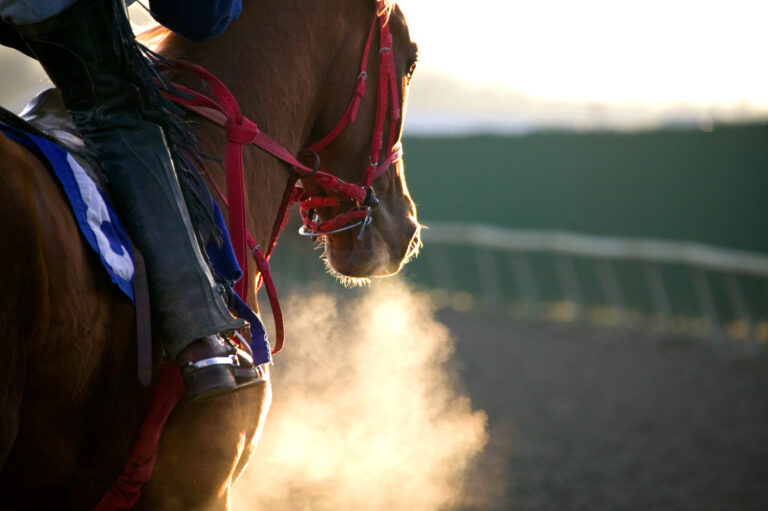
Equine tendon healing first starts with a proper diagnosis, said Roland Thaler, DVM, DACVSMR, owner of Metamora Equine in Michigan. Thaler is also ISELP certified and is a fellow in the College of Animal Chiropractors.
“You have to understand how the injury got there,” he stated.
Lesions can happen many ways depending on the horse and its use. A warmblood, for example is more likely to have degenerative changes and progressive remodeling of tendons, he explained. A Thoroughbred is probably going to have a core lesion in a tendon.
Thaler said you also need to know the location of the injury in the tendon.
He said there is research that indicates that horses with PPID (Cushing’s disease) have dysfunctional cells that repair tendon and ligament damage. This can result in “spontaneous disruption” of a tendon or ligament in an older horse. “There’s no ‘event.’ It’s a metabolic comorbidity” in horses with PPID, he explained. It is suspected that there is a reduced ability of adaptive remodeling in PPID horses.
Thaler said tendons can be injured by compensatory overloading. “You have an injury to one limb and the other limb is injured” due to extra stress and strain, Thaler explained.
He also said shoeing and heel height can cause tendon injuries. Thaler reminded veterinarians that in older horses, there can be multiple contributions to lameness. That might include issues in the hocks, neck or back.
Diagnoses
Thaler discussed the clinical signs of tendon injuries. He noted that veterinarians need to discern old, healed injuries versus new, acute injuries.
Obtaining a good history on the horse is important in diagnosing equine tendon issues. He said while you might have the onset of lameness with the onset of clinical signs, “Frequently, you have a slow progression of signs that may not be obvious.”
Thaler also said veterinarians should identify changes in performance demands associated with the onset of clinical signs. “You have increased risk [of tendon injury] with high speeds, high jumping and high demands,” he noted. “The elevated risk of tendon injury when jumping over three feet is likely related to hight of the center of gravity of the horse.”
Ultrasound for diagnosing tendon injury is subjective and dependent on the operator, said Thaler. He discussed techniques to better use ultrasound on tendon injury diagnosis.
He said ultrasound can be used to measure healing quality as related to the horse’s ability to return to work. However, “MRI is the gold standard,” he said. “CT with contract an also be useful and is likely under-utilized.”
Complications in Equine Tendon Healing
“The most common issue is re-injury because pain is the first sign to resolve,” said Thaler. “strength/flexibility is the last to return.”
He reminded veterinarians to warn owners that “something repaired is never as good as brand new.”
Treatments in Equine Tendon Healing
Thaler talked about rest/active rest, rehabilitation, orthobiologics, platelets, and other treatments that are currently available.
“I much prefer active rest to stimulate repair remodeling,” said Thaler. “Restrict turnout until return to work is completed.”
For rehabilitation, he noted that it is important to condition the structure using a pulsed intensity compared to a step program. That way, you can reduce biomechanical loading/fatigue while allowing adaptation to higher stresses.
To learn more about Thaler’s thoughts on other treatments, check out the podcast!
Client Management
Thaler said shoeing to reduce loading of the injured structure is important to the healing process. The duration needs to be determined.
He recommended metabolic testing of horses (especially older horses) that have tendon injuries.
“Icing after exertion” is important to the healing process, he noted.




